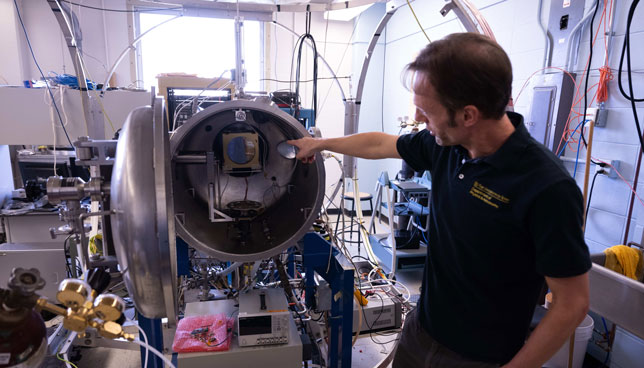
The University of Iowa Leads NASA-Funded Space Weather Research with Twin Satellites — Campus Technology
TRACERS: The University of Iowa Leads NASA-Funded Space Weather Research with Twin Satellites
A Q&A with Jasper Halekas
On July 23, 2025, a NASA-funded mission led by the University of Iowa saw the successful launch of its twin satellites from Vandenberg Space Force Base space launch complex 4E, atop a SpaceX Falcon 9 rocket. The TRACERS satellites (Tandem Reconnection and Cusp Electrodynamics Reconnaissance Satellites) are carrying on-board instruments in a solar-synchronous low Earth orbit. From there, the duo will spend a year taking measurements and returning data that will help researchers as they study the increasingly critical field of space weather — in particular, the interaction of the solar wind with the Earth’s magnetosphere (commonly thought of as Earth’s “protective bubble”).
CT spoke with Jasper Halekas, a professor in the Physics and Astronomy department at the University of Iowa and an instrument lead for the mission, about the knowledge TRACERS will bring to the science of space weather, and importantly, how students and the University of Iowa community benefit from the R1’s emphasis on bringing research collaborations and academics together.

Mary Grush: Why is the TRACERS mission important to the study of space weather?
Jasper Halekas: TRACERS is a mission concerned with understanding how the energy from the sun is coupled to the terrestrial environment. We know that the sun is putting out all kinds of energy — in the form of sunlight of course, but also in the form of what we call the solar wind, a flow of hot ionized gas coming from the sun at about a million miles an hour.
When there are space weather events — solar storms and things like that — some of that energy can come into the terrestrial environment and affect our technological systems that are in orbit or sometimes even on the ground.
So, TRACERS is concerned with understanding how efficient that transfer of energy is; how much of that energy from the sun can get into the Earth’s protective magnetic bubble, if you will, and affect our technological systems and consequently our society in the terrestrial environment.
Grush: Looking at the name of the mission for a minute, could you explain a little bit about magnetic reconnection? And related to that, what is the role of what is called a cusp?
Halekas: Magnetic reconnection is a process that occurs in a space plasma, that basically allows a crack to form in the Earth’s magnetic field.
As you know, the Earth has a big global magnetic field produced in its core, and that magnetic field forms a kind of protective bubble around the terrestrial environment.
But that bubble can be cracked, letting energy in from the sun. Magnetic reconnection is a process that allows that to happen. It is a process where the magnetic field from the sun interacts with the magnetic field from the Earth in such a way as to open up Earth’s magnetic field, letting some of the solar wind particles and energy come into the terrestrial environment.
One place that we can observe that is the polar cusp of the Earth’s magnetosphere. The cusp is basically a big funnel that connects Earth’s atmosphere and ionosphere out to the front of the Earth’s magnetic bubble. And so, it allows us to see, in a sense, what’s happening out at the very front of the Earth’s magnetic shield — because everything sort of funnels down the cusp to us, and we can now observe it with TRACERS.
Source link



